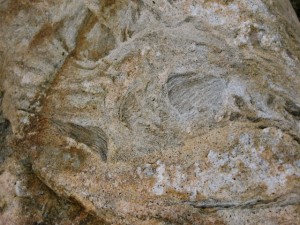Welcome to Chuck’s Place, where Chuck Ketchel expresses his thoughts, insights, and experiences! Many of the shamanic and psychological terms used in Chuck’s essays are defined in Tools & Definitions on our Psychotherapy website.
We are born into this world with bodies fully formed and constructed via ancient programs of evolutionary successes and, yet, our minds begin as blank slates, orphans of our ancestral parentage. What an apparent contradiction! This is the dominant scientific perspective and, in fact, the experience of most people with the birth of consciousness, or the ego, in early childhood.
This birth of awareness, of “I,” a separate self, is at once exciting and overwhelming. Excitement comes from discovering the freedom and power of autonomy and choice. Fear springs from the awareness that our newly discovered “I” is small and inadequate, hardly capable of caring for itself in a powerful world it neither understands nor can control.
This birth of consciousness is the moment of eating the forbidden fruit from the Tree of Knowledge in the Garden of Eden. The punishment for awareness of a separate self is banishment from the garden, and the charge to the ego, that separate self, is to “go it alone,” despite its inadequacy and lack of preparation. Our banishment, the birth of the ego, is our separation from our wise ancestral self. We become a blank slate, seeking, with desperate extraverted eyes, to fill our egos with knowledge, gained from trial and error or formal education, to be capable of occupying a space in this world, with some sense of legitimacy, orphans that we are. This is the plight of the ego, alienated from its wise ancestral self.
We spend the better part of the first half of life struggling to find our place in this world. We seek to discover our talents, our callings, where we belong. We burn through many false starts, trial and error careers and marriages, all the while accumulating more knowledge and clarity of who we “really are.” Regardless of our successes and failures in life, at the deepest level, we remain orphans, at best very adequate, well adapted, successful orphans, but, underneath, aware of a void. For some, this void is a deep sense of inadequacy, while for others it presents as a deep spiritual longing. Jung would identify it as the challenge of individuation, where the ego accepts its rightful but relative place as part of the all-encompassing wise ancestral self.. That wise ancestral self is present and functioning throughout our lives, it is our true guardian angel.
For example, years ago, as I stood alone on a beach in Jamaica, forcibly loading my spear gun, I inadvertently stabbed the back of the spear deep into my palm. (I wrote about this experience in The Book of Us, but I am presenting a different perspective on it this time around.) At that moment, I fainted; my ego vanished. It was overwhelmed; it knew not what to do. When my ego woke up, I returned to consciousness: I was sitting on the beach with my palm packed in a lump of wet sand. The bleeding had been fully contained and coagulated; the wound was completely sterile and healing. Who did that? Who knew exactly what to do without any intervention of consciousness? No one else was on the beach, and my ego was fully asleep.
In another example, years after that, I was driving alone very late at night northbound on the Taconic State Parkway. I fell completely asleep. When I woke up I was driving, properly, in the southbound lanes of the Taconic State Parkway! Mind you, I was not drunk, in some kind of blackout state. I’d simply fallen completely asleep. Who took over the wheel and had the sense of humor to make me grapple with the fact that I had somehow successfully made a U-turn while my ego was asleep!
These are dramatic examples that, for me, illustrate the background activity of the wise ancestral self that operates on our behalf, fully independent of our ego awareness. Yes, we think we are orphans but, the truth is, our wise ancestral self is always participating in our lives. The real issue is whether the ego is in alignment with this wise ancestral self or completely at odds with it. Psychological symptoms, such as compulsions or compulsive projections, as well as physical illnesses often reflect interventions by our wise ancestral self to influence the decisions and actions of our alienated egos. I give the following hypothetical example, using a sexual compulsion. This is not a judgment about the type of sexual play enacted in S & M play. I assume here that my hypothetical client is disturbed by their compulsion. For example, this client might be an executive with an extremely powerful, dominant personality in the world, with a lot of control over others but possessed by a strong masochistic sexual compulsion. In this case, the wise ancestral self saddles them with a compulsion that attempts to deflate a power-hungry ego by compelling it to walk around on all fours with a collar around its neck, obeying the commands of a dominatrix. If this individual can rein in its alienated inflated ego and become humble, by assuming its rightful but modest place as part of a greater whole within the psyche, then the wise ancestral self could lift the compulsion and allow balance to be restored.
The introvert has the advantage of direct contact with the wise ancestral self because the primary focus is the inner subjective experience whereas the extravert focuses outside the self, giving primacy to the object. The introvert has direct access to the thoughts and feelings of the wise ancestral self who communicates in both images and words. The artist frequently receives the images and expresses them on a canvas or in other form. For those inclined to words, there is verbal communication with various parts of the wise ancestral self. Jung called this active imagination, where the ego volitionally communicates with the greater psyche to better understand its message or point of view. Channeling, at a certain level, is written or verbal contact with parts of the individual psyche or wise ancestral psyche, what Jung called the collective unconscious. At the deepest level, channeling is communication beyond the psyche and the confines of this world.
Dreaming is a daily dance with the greater psyche. Every time we write down a dream and feel and contemplate the characters and the situations in our dreams we are connecting with and seeking greater alignment with our deeper wise ancestral self. When I write down a dream, I structure it like a poem. For example, recently, I had the following dream:
My younger son was about nine years old, and was a DJ.
His dilemma was, how to get rides to his jobs.
I offered to take him to a particular job.
It turned out that he was the DJ for his own birthday party.
I was surprised. I didn’t know about the party.
He told me he had invited Efren, my old therapist.
I thought, “Why would Efren come?”
He didn’t know anyone.
When I first wrote the dream, I was struck by the image of my son spinning 45’s, as well as the interest of my old therapist in attending his birthday party. That was the extent of my dance with my dream. I returned later, continuing to visualize the spinning record. The word circumambulation came into my mind and I researched its meaning. Jung identified the circular process of attempting to find one’s way to the self as an individuation motif, the process of walking a labyrinth; the ego’s circuitous attempts through life to find its way back to the center, to the garden, to the wise ancestral self. As I visualized the needle on the record, going round and round, making its way toward the center, I recognized that my wise ancestral self was pointing me to embrace the innocence symbolized by my young son. This was further highlighted by my old therapist’s interest in going to the party. He had once been the projection of my wise ancestral self by my younger self, then in therapy with him. This continued dance with my dream shifted both my mood and awareness and directly impacted decisions that I made that day.
The challenge for introverts is to value their inner experiences in a world currently dominated by an extraverted prejudice. The challenge for extraverts is to recognize that the outer world becomes the palette for the deeper psyche to guide and alter judgments and actions. Owning projections for the extravert is an important means to dance with the inner images and align with the intent of the wise ancestral self.
In truth, there is no contradiction between psyche and body when we are born into this world, both are connected to their ancestral roots. It remains for the blank slate ego to rediscover its wise ancestral self. For the introvert, this is most accessible within; for the extravert without, via projection, but no one is a pure introvert or extravert. With a little effort, extraverts can dance with their dreams and introverts recognize their projections.
If you wish to correspond, please feel free to post a comment below.
Until we meet again,
Chuck


